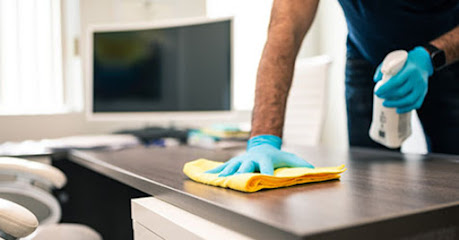How to Get Rid of Bleach Stains
Perhaps the most publicized examples of the effects of chlorine bleach are those cases where paper plants have used bleach to break down proteins and fibers in paper products. The chemicals left over from the bleaching process are some of the most notorious and powerful carcinogens (cancer-causing agents) known to man, and oftentimes they’re simply poured out into lakes and streams nearby.
There’s an ongoing investigation and legal battle regarding Georgia Pacific’s (a large paper-producing corporation) disposal of toxic waste in people’s backyards, people who now have higher rates of cancer than anywhere else in the region.
For some people, the best option is to stop using bleach and instead make do with the very good alternatives listed below, under the heading “natural bleach alternatives.” If, however, you aren’t willing to make the switch right now, it’s completely understandable. But to get to the crux of the matter, this article is about removing or repairing stains leftover by chlorine bleach.
Bleach Stain Removal/Repair
- For an immediate treatment of a bleach stain, you may want to consider Sodium Thiosulfate. Sodium Thiosulfate, also called photographic fixer, is an agent that has been used as a way to neutralize the bleaching effects of other substances. In other words, it neutralizes bleaching agents, and helps restore fabrics or surfaces that have been bleached.
Sodium thiosulfate can be used as an immediate spot treatment to neutralize bleach before it stains your fabric. You can blot the stain with a clean white cloth that has been dipped in S.T. first until the stain either begins to disappear or the fabric becomes saturated.
Rinse with cold water and repeat until the desired effect is achieved or no more progress is made. Unfortunately, this product isn’t easy to find.
- If you’re trying to remove or repair a bleach stain without the use of laboratory-grade chemicals, the first thing you should try is white vinegar. Go get yourself some Heinz white vinegar or even the generic stuff.
Soak a clean white cloth with the vinegar and start dabbing/blotting the stain. Keep doing this until the fabric won’t hold anymore vinegar in the immediate vicinity of the bleach stain. Rinse with cold water and repeat.
Vinegar has been used traditionally as a color restoration solution for a very long time. Not only does it immediately neutralize any bleach agents left in the fabric, but the acids in vinegar (acetic acid) will help dissolve or peel away any damaged fabric that may be causing a bleach stain to stand out.
Warning: Vinegar will eventually damage cotton fabrics with enough exposure, so use white vinegar conservatively when treating bleach stains.
- If vinegar and sodium thiosulfate aren’t getting rid of your bleach stain, you should consider Marvy Fabric Markers to cover up the discoloration. The alternative to the Marvy Fabric Marker is the Sharpie permanent marker. Both options are just as effective at covering up bleach stains.
You can find Marvy Fabric Markers in almost any craft or fabric store, and they’re made in a variety of colors. If you’re lucky, you may just find the color that works for whatever it is you’ve bleached.
Fabric Markers are usually safe to wash, but never use a bleaching agent on that fabric again as it’ll come out worse than before. Test the marker on a clean white rag before applying it to your fabric, to make sure it’s the right shade for your needs.
- This might sound a little dubious, but drying your clothes in direct sunlight to lighten the color surrounding the bleach stain is an effective method. It may not sound very practical, but at this point, you’re running out of options. Sunlight has a very powerful bleaching effect. Ask any piece of driftwood and it’ll tell you the same thing.
According to Ellen Sandbeck, author of Organic Housekeeping, laying a bleach-stained piece of fabric over a bush or a grass lawn in direct sunlight will increase the bleaching effects of the sun because of the oxygen (another powerful bleaching agent) produced by the vegetation beneath. Make sure you shake those clothes off before bringing them inside.
- The last resort in your battle to remove bleach stains is the color stripper. Color stripper, otherwise known as color remover, is what you use to take color out of a garment or fabric before re-dying it a new color.




Comments
Post a Comment